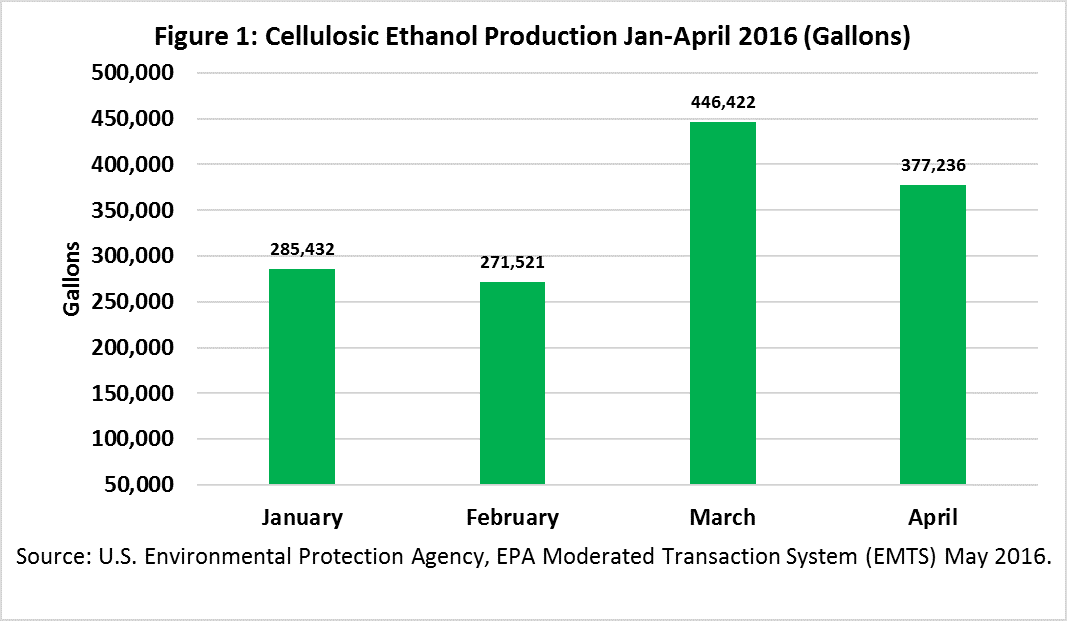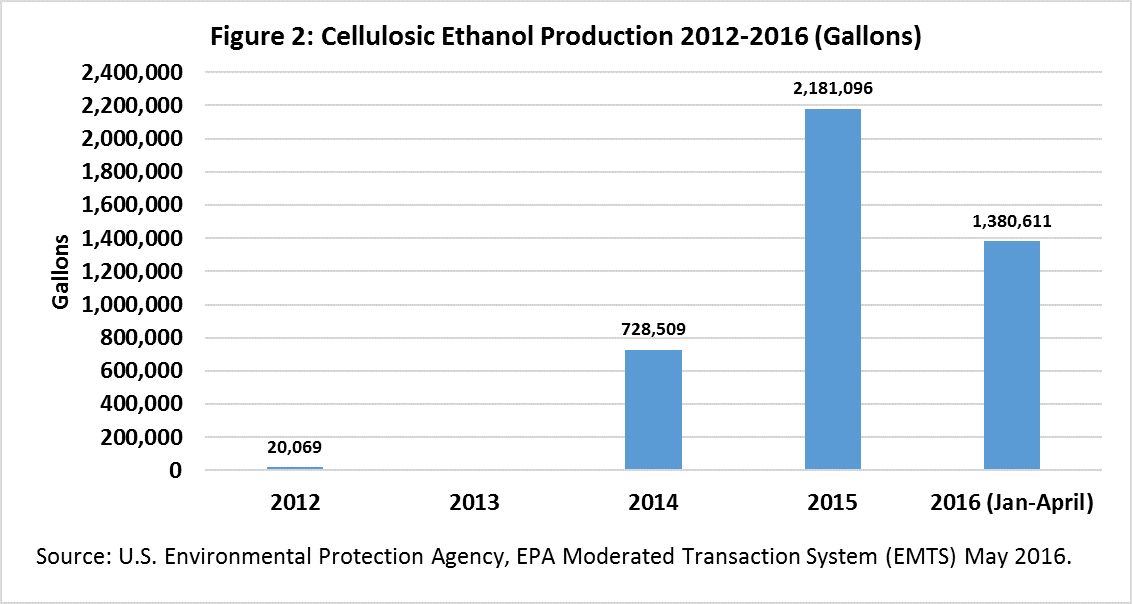Commercial scale cellulosic ethanol production has gained reasonable momentum during the first 4-months in 2016. Last October, the world’s largest cellulosic ethanol plant with capacity of 30 million gallons per year was opened in Nevada, Iowa. Most of the cellulosic ethanol produced at this plant will likely be purchased by refiners and blenders in California to fulfill the state’s carbon credit program. More detail about the California low carbon fuel credit program can be found at our Iowa State University’s AgMRC May 2016 and June 2016 newsletters.
Figure 1 shows the monthly production of cellulosic ethanol in 2016. In April 2016, the United States produced 377,236 gallons of cellulosic ethanol compared to 444,422 gallons in March, a reduction of 15 percent. According to the Environmental Protection Agency’s (EPA) final ruling on the Renewable Fuel Standard for 2016, the total cellulosic biofuel volumetric mandate is set at 230 million gallons. Cellulosic ethanol is one of three fuels included within the “cellulosic biofuels” category. The other two components of cellulosic biofuels include Renewable Compressed Natural Gas and Renewable Liquefied Natural Gas. For now, we only speak of cellulosic ethanol.

As shown in Figure 2, the first ever qualifying production batch of cellulosic ethanol in the U.S. was 20,069 gallons in 2012, but there was no production reported in 2013. In 2014, the total production was 728,509 million gallons.
Total production of cellulosic ethanol is 1.38 million gallons from January to April in 2016. The total production in 2015 was 2.18 million gallons. This indicates that approximately 64 percent of total production in 2015 has been achieved by the first 4-months in 2016 with significant private and public investments over the last 10 years.

Cellulosic ethanol production has been significantly lower than expected since the national Renewable Fuel Standard was revised in 2010. This lead the EPA to substantially reduce the required volume of cellulosic biofuels in its proposal for 2017 mandated renewable fuel published on May 18, 2016 (Renewable Fuel Standard Program: Standards for 2017 and Biomass-Based Diesel Volume for 2018). The total cellulosic biofuel volume is proposed at 312 million gallons for 2017. However, the statutory volume requirements for cellulosic biofuels for 2017 was set at 5.5 billion gallons according to the EPA’s RFS2. Year-to-date cellulosic ethanol production volume in 2016 is encouraging for cellulosic ethanol marketers, from both a national RFS and California low carbon fuel credit program perspective. Current production is proving to be a much needed impetus to promote growth in the cellulosic biofuel industry.
Be sure to subscribe to the AgMRC Renewable Energy and Climate Change Report for a more detailed analysis of this topic in the July 2016 issue.

